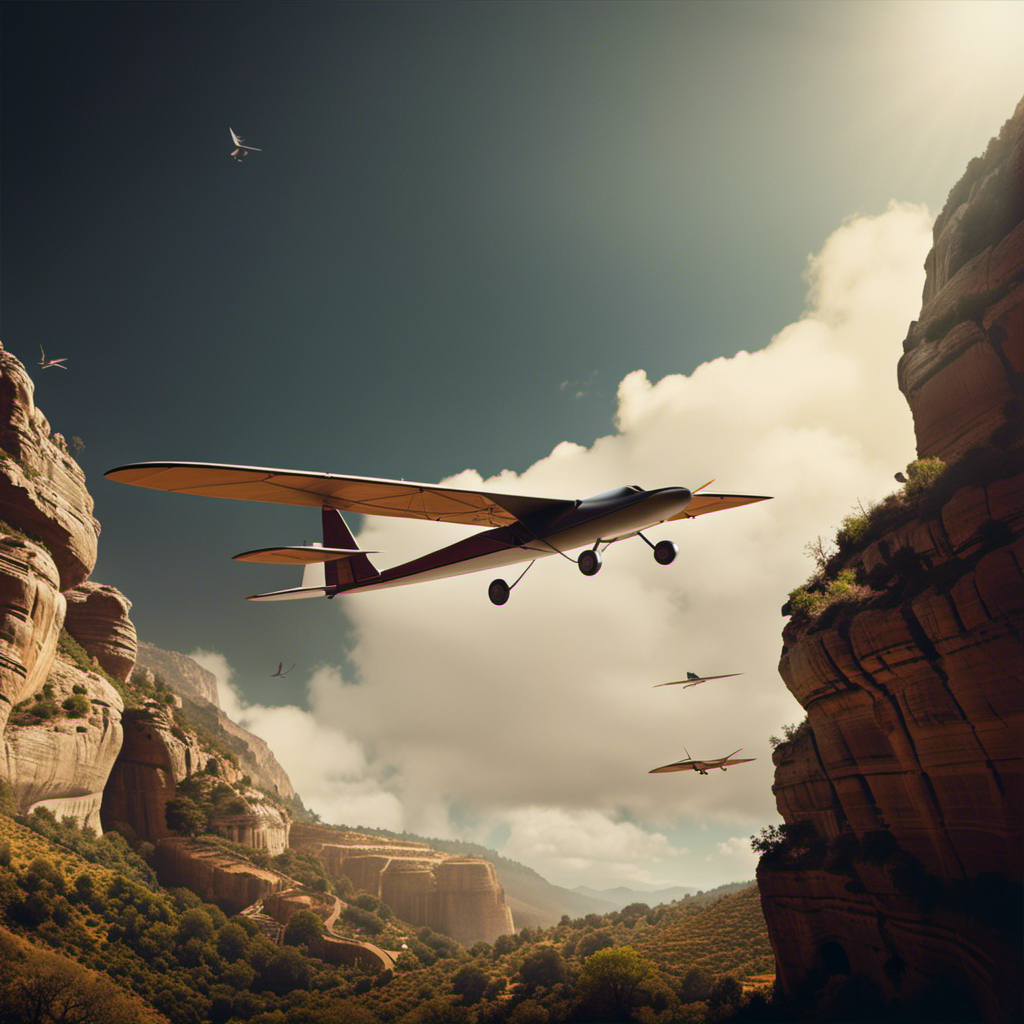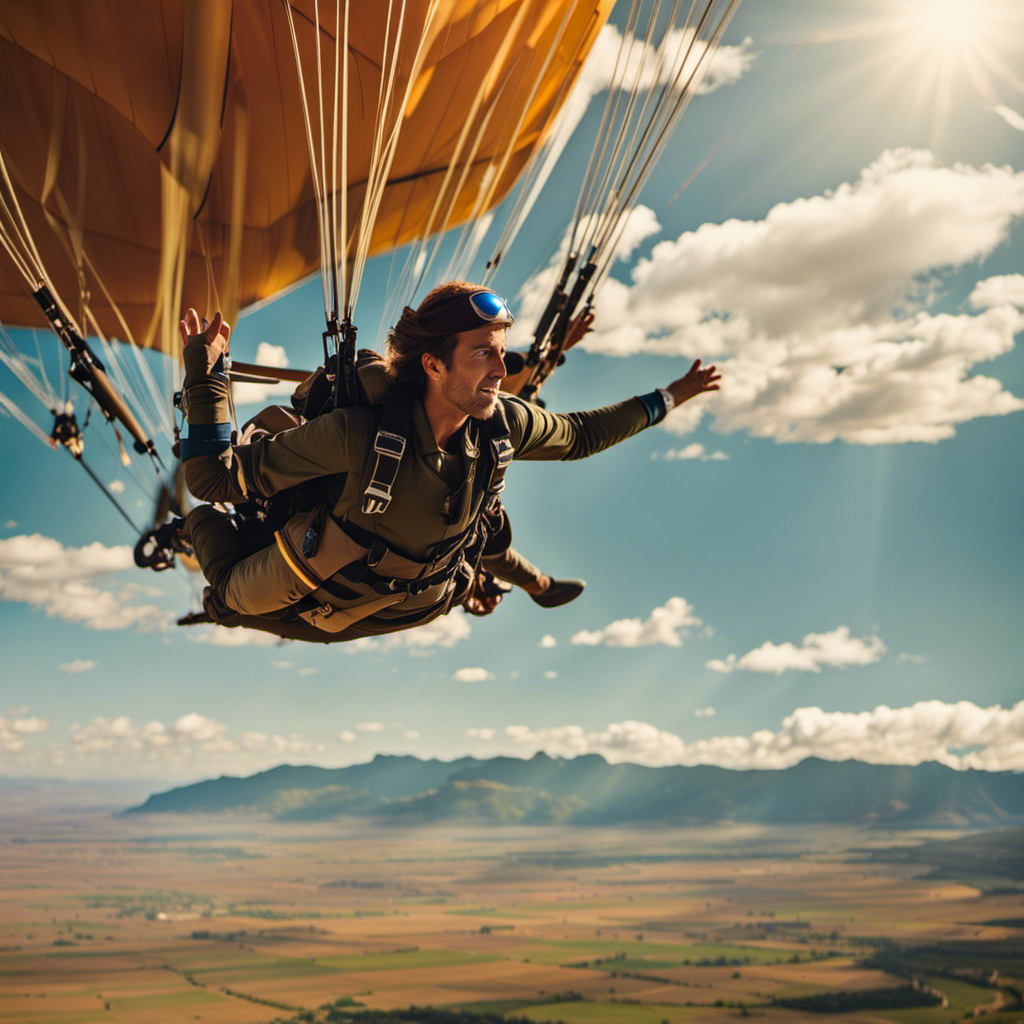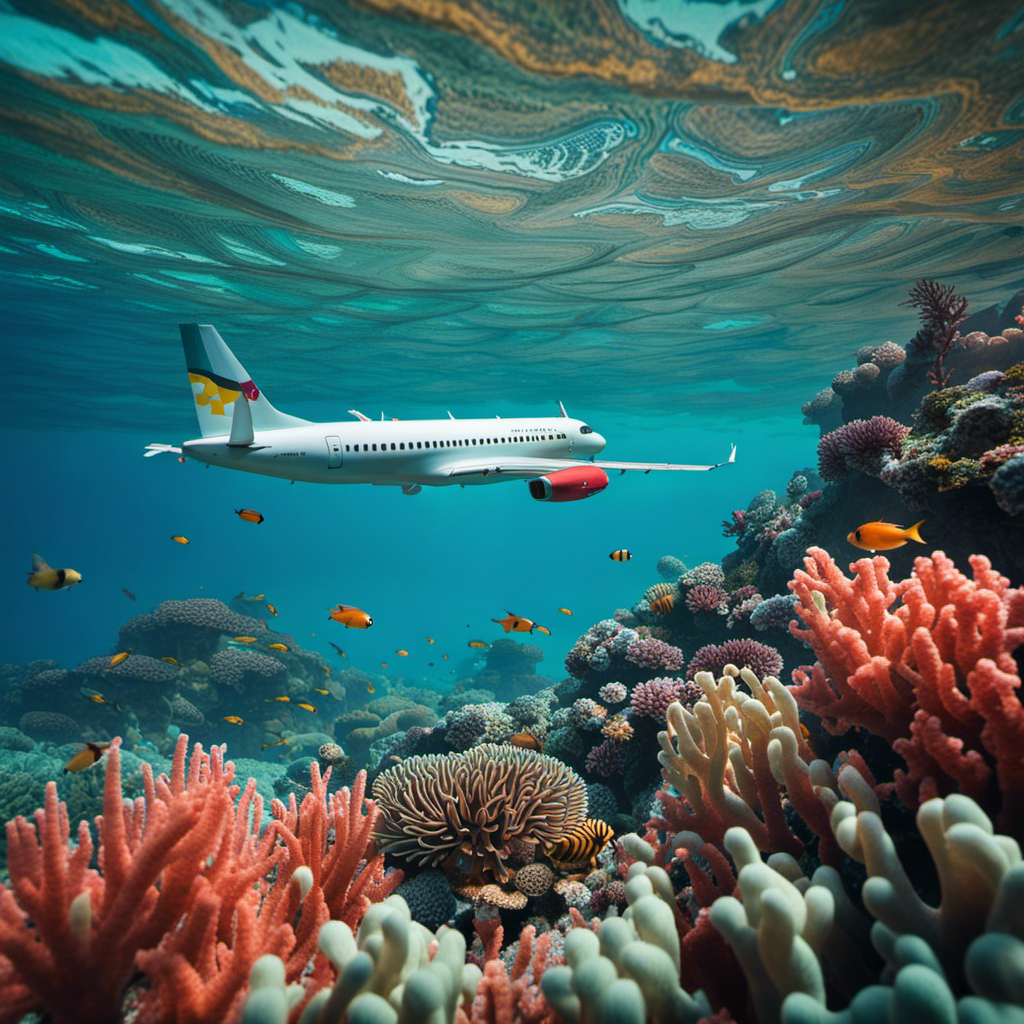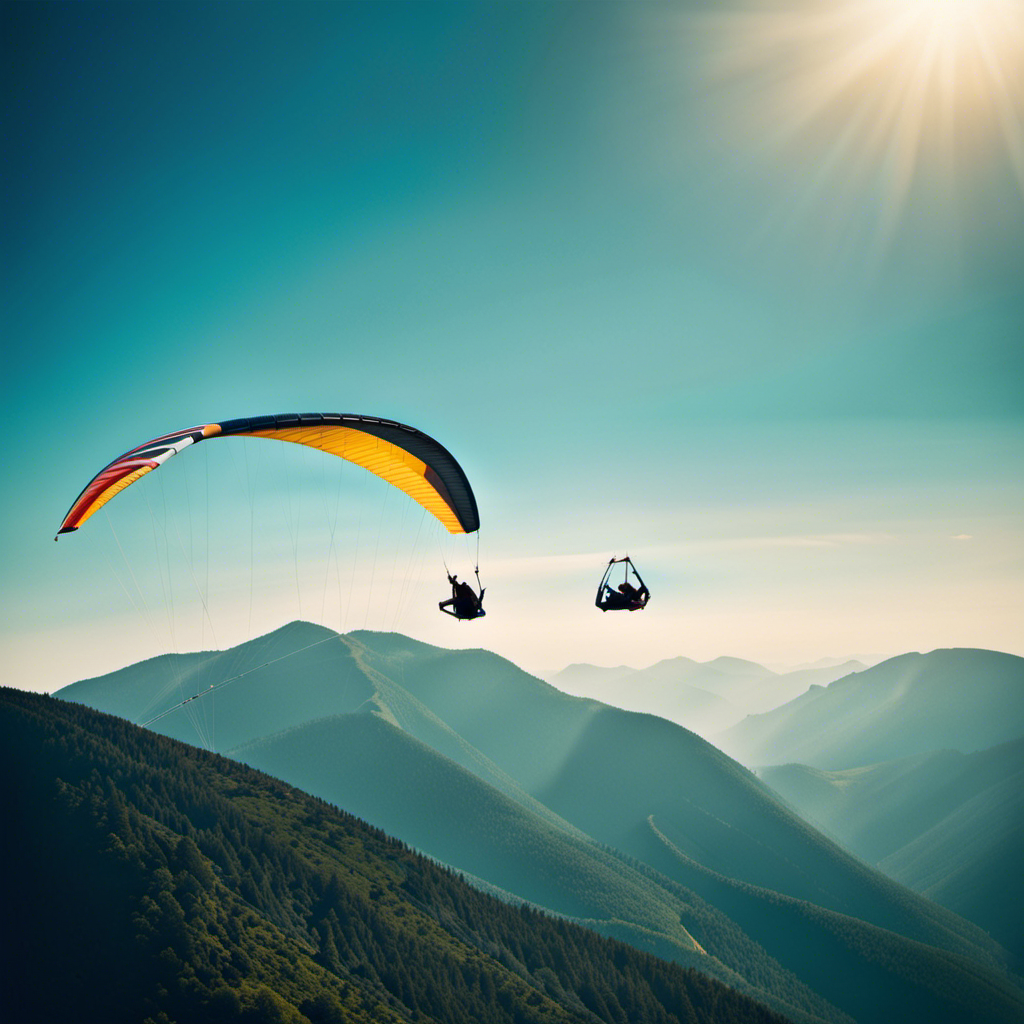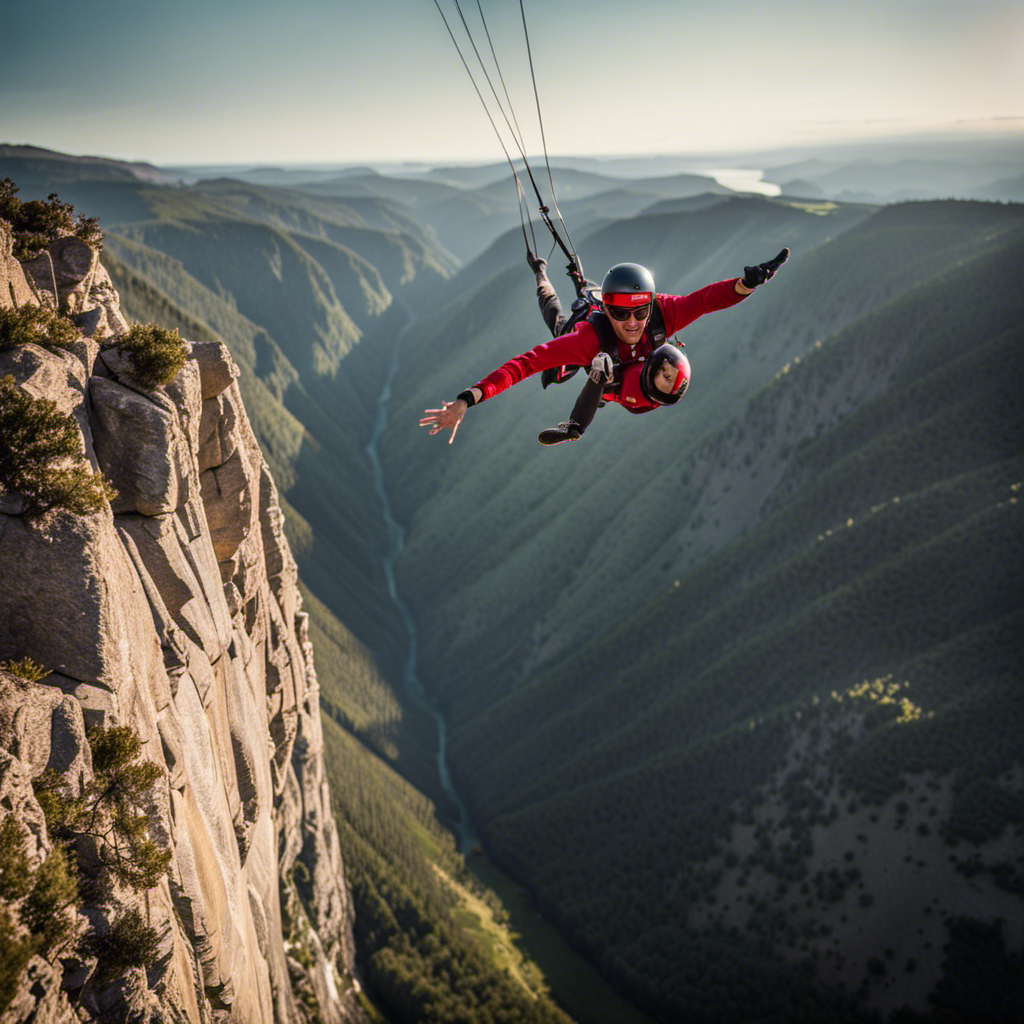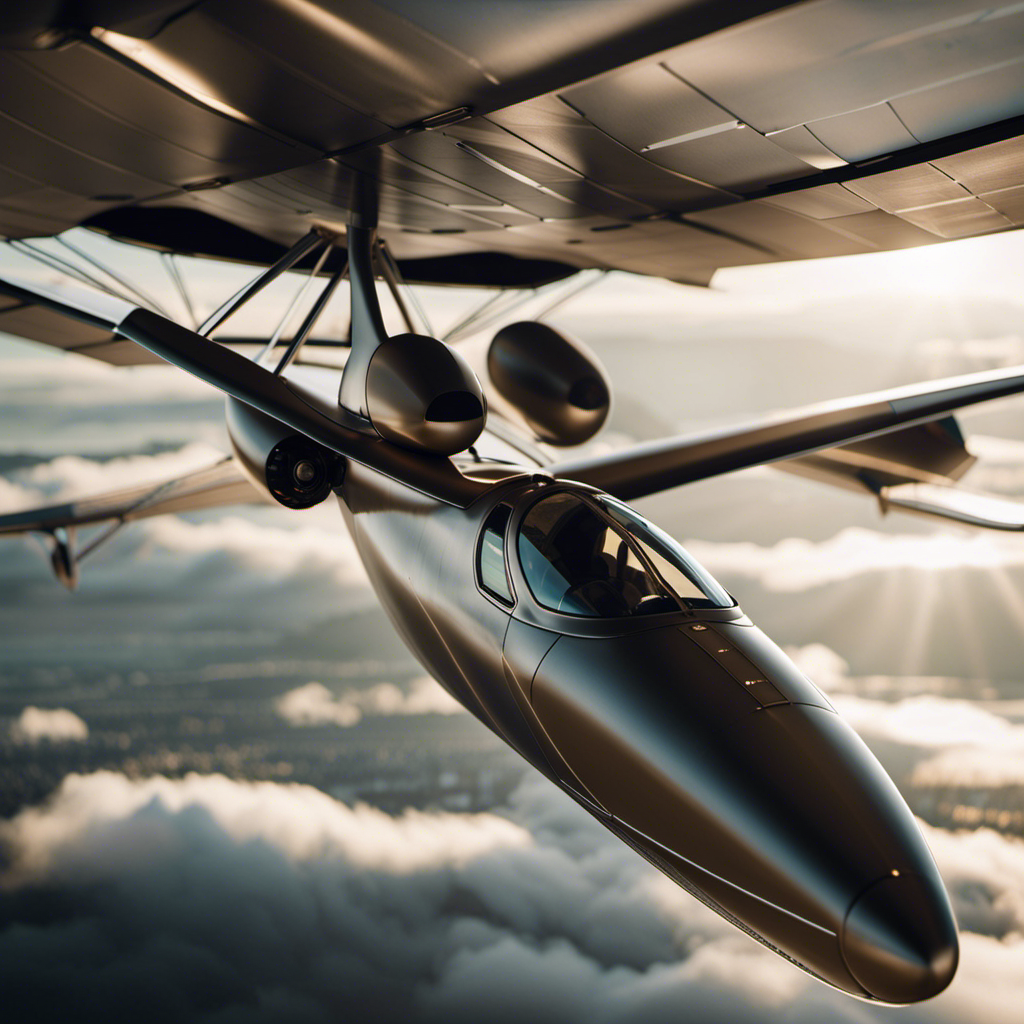Imagine setting off on a journey through history, witnessing the early advancements in aviation, experiencing the thrill of piloting gliders in World War II, and marveling at the advancements in glider technology.
Picture yourself soaring through the skies, competing in gliding competitions and setting records that defy gravity.
Discover the role of gliders in space exploration and the vibrant communities that thrive in gliding clubs.
Get ready to explore the fascinating history of gliders, a journey that will transport you to new heights.
Key Takeaways
- Early civilizations such as the Egyptians, Greeks, and Chinese made attempts at flight through the use of wings and kites.
- The Wright Brothers played a significant role in the development of gliding, introducing unique wing-warping control and later achieving controlled, powered flight with the Wright Flyer.
- Gliders played a crucial role in World War II, being used for silent troop and equipment transport, and demonstrating success in glider-borne attacks and securing strategic positions.
- Advancements in glider technology, including wing design, aerodynamics, and materials, revolutionized glider performance, improving capabilities such as soaring and reducing drag.
Early Innovations in Flight
Now, let’s take a look at how you can trace early innovations in flight back to the ancient civilizations.
The desire to fly has been present in human history for thousands of years. Ancient civilizations such as the Egyptians, Greeks, and Chinese all had their own attempts at achieving flight.
In Egypt, drawings on the walls of tombs depict men with bird-like wings attached to their arms.
The Greeks, inspired by the myth of Icarus, experimented with various winged contraptions.
The Chinese, on the other hand, developed kites as a form of entertainment and also used them for military purposes.
These early attempts laid the foundation for future advancements in flight, leading us to the next chapter in the history of gliders, the Wright Brothers and the birth of modern gliding.
The Wright Brothers and the Birth of Modern Gliding
If you want to learn about the birth of modern gliding, you should know that the Wright Brothers played a significant role in its development. Orville and Wilbur Wright, two American aviation pioneers, were fascinated by the concept of flight from an early age. They conducted extensive experiments and made numerous innovations that paved the way for modern gliding. In 1900, they built their first glider, which had a wingspan of 17 feet and utilized a unique system of wing-warping for control. Over the next few years, the Wright Brothers continued to refine their glider designs, incorporating a more efficient biplane configuration and improving stability and control. By 1903, they had achieved their goal of controlled, powered flight with the successful flight of the Wright Flyer. Their accomplishments revolutionized aviation and laid the foundation for future advancements in gliding techniques and technology.
| Year | Milestone |
|---|---|
| 1900 | Built their first glider |
| 1901 | Tested a new glider with improved control |
| 1902 | Introduced the biplane configuration |
| 1903 | Achieved controlled, powered flight with the Wright Flyer |
| 1905 | Developed the Flyer III, the first practical airplane |
Now, let’s delve into the next chapter of gliding history: gliding in World War II.
Gliding in World War II
Explore how gliding played a crucial role in World War II and discover the significant contributions made by glider pilots during the conflict.
In the early stages of the war, gliders were used to transport troops and equipment silently, allowing for surprise attacks. One notable example was the Battle of Fort Eben-Emael in 1940, where German glider-borne troops successfully captured a heavily fortified Belgian fortress.
Glider pilots also played a vital role in the D-Day invasion of Normandy in 1944. They transported troops behind enemy lines, enabling the Allies to secure strategic positions and ultimately achieve victory. These brave pilots faced incredible dangers, as gliders were often vulnerable to enemy fire and had no means of escape. Their courage and skill were essential to the success of many crucial missions.
As the war progressed, advancements in glider technology further improved their capabilities, allowing for longer and more precise flights.
Advancements in Glider Technology
In the discussion on advancements in glider technology, three key points will be explored: wing design and aerodynamics, materials and construction techniques, and safety features and equipment.
Firstly, the evolution of wing design and aerodynamics has greatly influenced the performance and efficiency of gliders. From the early days of simple flat wings to the development of high-lift airfoils and winglets, these advancements have allowed gliders to soar for longer distances and at higher speeds.
Secondly, the materials and construction techniques used in modern gliders have revolutionized their strength, weight, and durability. The use of composite materials such as carbon fiber and fiberglass, as well as advanced construction methods like vacuum infusion, have resulted in lighter and more rigid glider structures.
Lastly, safety features and equipment have been continuously improved to ensure the well-being of glider pilots. From the installation of safety belts and parachutes to the implementation of cockpit instruments and emergency communication systems, these advancements have significantly enhanced the safety standards in gliding.
Wing Design and Aerodynamics
The wing design and aerodynamics of gliders have significantly evolved over time. As pilots sought to improve the efficiency and performance of gliders, various advancements were made in this area.
-
Aerodynamic Shapes: The development of sleeker and more streamlined wing shapes, such as the laminar flow airfoil, reduced drag and improved lift-to-drag ratios.
-
Wing Aspect Ratio: Increasing the wing aspect ratio, which is the ratio of wingspan to average chord length, allowed for better soaring capabilities and increased glide performance.
-
Wingtip Devices: The addition of wingtip devices, like winglets or raked wingtips, helped reduce wingtip vortices and improved overall aerodynamic efficiency.
With these advancements in wing design and aerodynamics, gliders became more efficient and capable of achieving longer flights and higher speeds.
As we delve into the next section on materials and construction techniques, we will explore how these advancements were incorporated into the overall design and manufacturing process of gliders.
Materials and Construction Techniques
Take a moment to consider the materials and construction techniques used in modern gliders. These incredible flying machines are made with lightweight yet durable materials, such as carbon fiber, fiberglass, and Kevlar. These materials are meticulously layered and bonded together to create strong and aerodynamic structures.
The wings are often built with a combination of composite materials and have a sleek, streamlined design to maximize lift and minimize drag. The fuselage is usually made using a combination of metal and composite materials, ensuring strength and rigidity while keeping weight to a minimum.
The construction techniques used in gliders involve precision engineering and advanced manufacturing processes, including computer-aided design and 3D printing. These techniques allow for greater accuracy and efficiency in creating the complex shapes and structures of modern gliders.
As we delve into the next section on safety features and equipment, it is important to understand how these materials and construction techniques contribute to the overall performance and reliability of gliders.
Safety Features and Equipment
Now that you have an understanding of the materials and construction techniques used in gliders, let’s dive into the importance of safety features and equipment. Gliding may seem like a peaceful and serene activity, but it still involves risks that need to be mitigated. Over the years, advancements in technology have led to the development of various safety features and equipment to ensure the well-being of glider pilots.
To give you a better understanding, let’s take a look at the table below, highlighting some key safety features and equipment commonly found in modern gliders:
| Safety Feature | Description |
|---|---|
| Parachute | A vital piece of equipment that can be deployed in case of an emergency, allowing the pilot to safely descend to the ground. |
| Cockpit Canopy | Provides an enclosed space for the pilot, protecting them from external elements and offering aerodynamic advantages. |
| Safety Harness | Keeps the pilot securely strapped to the seat, preventing them from being ejected during maneuvers or turbulence. |
| Pitot Tube | Measures the dynamic pressure of the airflow, enabling the pilot to monitor airspeed and prevent stalling. |
| Emergency Locator Transmitter (ELT) | Sends out distress signals in case of a crash, aiding search and rescue teams in locating the glider. |
These safety features and equipment play a crucial role in ensuring the pilot’s safety during gliding activities. Now, let’s move on to the exhilarating world of gliding competitions and records, where pilots push the limits of their skills and aircraft.
Gliding Competitions and Records
During the 1930s, gliders became increasingly popular for competitive flying and setting records. This era marked a significant milestone in the history of gliding, as it witnessed a surge in gliding competitions and the establishment of remarkable records.
Here are three key highlights that captivated enthusiasts and pushed the boundaries of glider performance:
-
The Rhön-Rossitten Gesellschaft (RRG): The RRG, founded in Germany in 1920, organized gliding competitions that attracted participants from around the world. These events showcased the latest glider designs and encouraged innovation.
-
World Distance Records: Gliding enthusiasts relentlessly pursued distance records during this period. In 1932, American pilot Warren E. Eaton set a new world record by flying his glider 477 miles. This accomplishment inspired many to push the limits of gliding further.
-
The Olympia Sailplane: Designed by Hans Jacobs in 1935, the Olympia was a revolutionary glider that set numerous records. It demonstrated exceptional performance and became the benchmark for future glider designs.
As gliding competitions and record-breaking flights continued to captivate the world, a new era of human-powered gliding emerged, pushing the boundaries of what was thought possible in the realm of flight.
Human-powered Gliding
In the world of human-powered flight, two iconic aircraft stand out: the Gossamer Condor and the Gossamer Albatross. These groundbreaking machines were created by Paul MacCready and his team, and they paved the way for human-powered flight competitions.
The Gossamer Condor became the first human-powered aircraft to successfully complete a figure-eight course, while the Gossamer Albatross went on to win the prestigious Kremer Prize for completing a crossing of the English Channel.
These achievements sparked a renewed interest in human-powered gliding, and researchers and engineers continue to explore the possibilities for the future of this incredible form of flight.
The Gossamer Condor and Gossamer Albatross
You can’t help but be amazed by the engineering feats of the Gossamer Condor and Gossamer Albatross. Developed by Paul MacCready and his team, these human-powered aircrafts made history in the late 1970s.
The Gossamer Condor was the first to successfully complete a figure-eight flight course, earning MacCready the Kremer Prize in 1977. This incredible achievement showcased the potential of human-powered flight.
Building on this success, MacCready and his team went on to develop the Gossamer Albatross. In 1979, this remarkable aircraft flew across the English Channel, a distance of 22.2 miles, and won the second Kremer Prize.
These achievements paved the way for future advancements in human-powered flight competitions, pushing the boundaries of what was once considered impossible.
Human-powered Flight Competitions
Get ready to witness some incredible feats of engineering in human-powered flight competitions. These competitions have been happening for decades, pushing the boundaries of what is possible with sheer human strength and ingenuity.
Participants design and build their own aircraft, relying solely on their own power to propel them through the air. The tables below highlight some of the most notable human-powered flight competitions throughout history. From the Kremer Prize won by the Gossamer Condor and Gossamer Albatross, to the Red Bull Flugtag and the International Human Powered Vehicle Association (IHPVA) competitions, these events have showcased the remarkable advancements in human-powered flight technology.
These competitions continue to inspire and challenge engineers, pilots, and enthusiasts alike to push the limits of human potential in the skies. Transitioning into the future of human-powered gliding, new technologies and innovations hold great promise for even more remarkable achievements in the field.
The Future of Human-powered Gliding
New technologies and innovations are expected to revolutionize the future of human-powered gliding. With advancements in materials, aerodynamics, and propulsion systems, gliders will become more efficient and capable of achieving greater speeds and distances.
One such innovation is the development of lightweight yet strong materials, such as carbon fiber composites, that will allow for the construction of gliders with reduced weight and increased strength. Additionally, advancements in aerodynamic design, including wing shapes and control surfaces, will optimize lift and minimize drag, further improving the performance of human-powered gliders.
Furthermore, the integration of electric propulsion systems and energy regeneration technology will provide gliders with an additional power source, allowing for sustained flight and longer distances. These advancements will not only enhance the experience of human-powered gliding but also open up new possibilities for gliders in space exploration.
Gliders in Space Exploration
Take a moment to imagine how gliders have played a role in space exploration.
In the early days of space travel, NASA used gliders to test the aerodynamics and handling of spacecraft during re-entry into Earth’s atmosphere. These gliders, known as space shuttle orbiters, were launched into space by rockets and then glided back to Earth, similar to the way a traditional glider descends to the ground.
The space shuttle program, which spanned over three decades, relied heavily on gliders to safely return astronauts and cargo from space. These gliders were equipped with heat-resistant tiles to withstand the intense temperatures of re-entry. This groundbreaking use of gliders in space exploration paved the way for future advancements in spacecraft design.
Transitioning into the next section, let’s now explore the vibrant world of gliding clubs and communities.
Gliding Clubs and Communities
Joining a gliding club is a great way to connect with like-minded individuals who share a passion for soaring through the skies. These clubs provide a supportive community for glider enthusiasts, offering opportunities to learn, socialize, and participate in thrilling activities.
When you join a gliding club, you’ll have access to experienced instructors who can guide you through the process of learning to fly a glider. You’ll start by familiarizing yourself with the principles of gliding, such as aerodynamics and meteorology. Then, you’ll progress to hands-on training, including launching, controlling, and landing a glider.
By immersing yourself in this community, you’ll not only enhance your flying skills but also forge lifelong friendships with fellow glider enthusiasts.
Transitioning into the next section, gliders in popular culture have captivated audiences through their grace and beauty.
Gliders in Popular Culture
Gliders have been featured in numerous films and TV shows, allowing audiences to experience the thrill of soaring through the skies vicariously.
In the 1927 film ‘Wings,’ one of the first movies to win an Academy Award for Best Picture, gliders were used extensively to depict aerial combat during World War I. This groundbreaking film showcased the versatility and maneuverability of gliders in a way that had never been seen before.
Since then, gliders have continued to play a role in popular culture. From the iconic scene in ‘Indiana Jones and the Last Crusade’ where the protagonist escapes by piloting a glider, to the breathtaking gliding sequences in ‘The Dark Knight Rises,’ gliders have captivated audiences with their graceful flight.
As technology continues to advance, the future of gliding holds even more exciting possibilities.
The Future of Gliding
As technology advances, the future of gliding holds even more exciting possibilities. Here are four reasons why you should be excited about what’s to come:
-
Improved materials: With advancements in materials like carbon fiber and titanium, gliders can become lighter, stronger, and more aerodynamic. This means faster speeds, longer flights, and increased maneuverability.
-
Electric propulsion: As we move towards a greener future, electric-powered gliders are becoming more popular. These gliders are not only environmentally friendly but also quieter, making them ideal for soaring silently through the skies.
-
Enhanced safety features: With the integration of advanced sensors and artificial intelligence, gliders will become safer than ever before. These systems can detect potential hazards, provide real-time feedback, and even take automatic corrective actions to prevent accidents.
-
Virtual reality training: With the help of virtual reality technology, pilots can now train in realistic simulated environments. This allows for safer and more cost-effective training, helping aspiring gliders become skilled pilots without the need for expensive equipment or risking their lives.
The future of gliding is bright, promising more thrilling adventures and incredible experiences. Get ready to take flight into a whole new era of gliding!
Conclusion
As you reach the end of this journey through the history of gliders, you can’t help but feel like you’ve soared through time on the wings of these remarkable flying machines.
From the early innovations that sparked the dream of flight, to the advancements in technology that have propelled gliding to new heights, the story of gliders is a captivating one.
Just like a bird gracefully gliding through the sky, the history of gliders is a tapestry of innovation, courage, and human ingenuity.
So strap in and prepare for the future, where the legacy of gliders continues to inspire and amaze.
Orion, better known as “Jetstream,” is the voice that brings the stories of the skies to life. His fascination with aviation began at a young age, sparked by his father’s tales of flying and adventure. Orion’s journey into the world of gliding was serendipitous, and from the moment he took his first glider flight, he knew he had found his calling.
